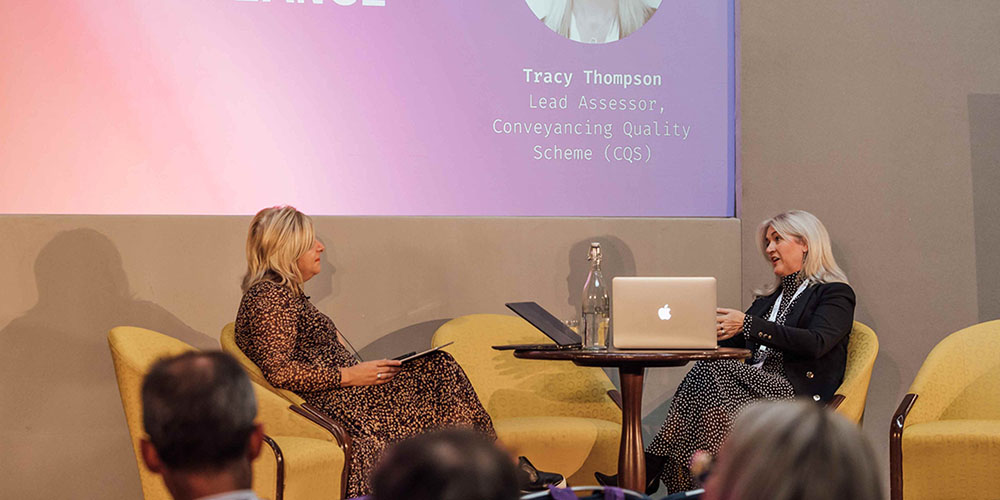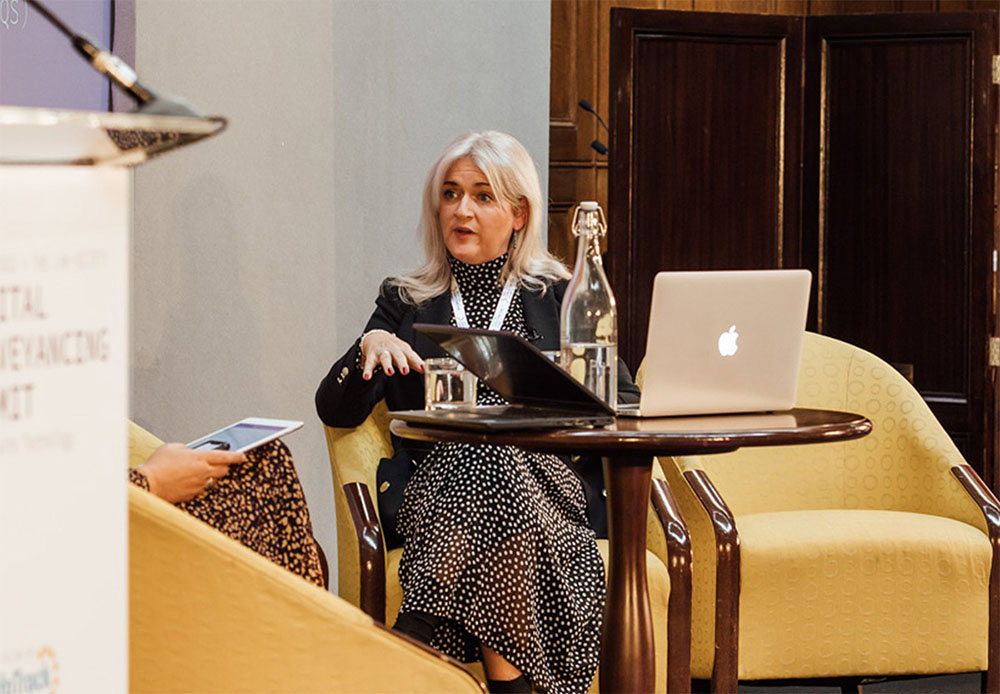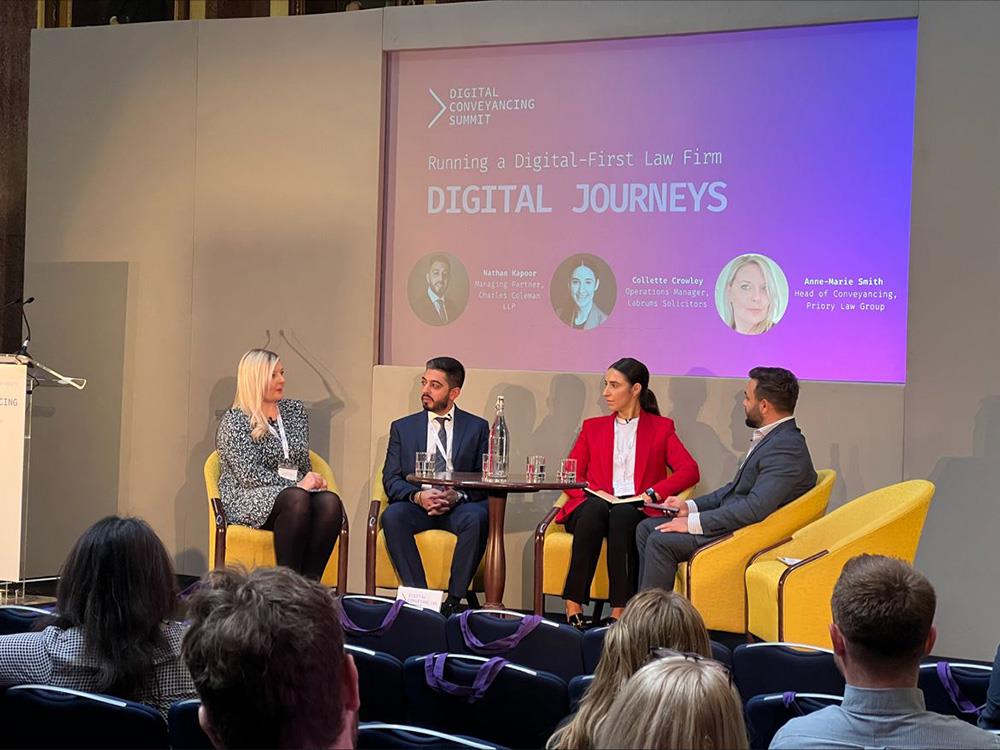Changes to the Core Practice Management Standards took effect from 1st May 2022. Discover how you can use technology to support your Law Society CQS compliance.
How technology can help you with CQS compliance
Compliance should be a priority for every law firm. With many firms accredited under the Law Society Conveyancing Quality Scheme (CQS), there continues to be a focus on how to ensure you’re prepared and on top of your compliance obligations. We recently caught up with Lead CQS Assessor, Tracy Thompson following her discussion at the Digital Conveyancing Summit – if you missed it, you can catch up on-demand here.
We spoke with her to understand more about what changes took effect with the updates to the Core Practice Management Standards from 1st May 2022 and how technology can aid law firms’ CQS compliance.
What changes are there to the Core Practice Management Standards (CPMS) in May 2022?
The new Core Practice Management Standard took effect from 1st May 2022 and were applied to realign the guidelines with the current conveyancing risk climate. The previous standards were three years old, and since its inception in 2010, more than 3,500 firms had been accredited under the CQS scheme. The changes introduced were designed to bring greater credibility to CQS and enhance the breadth of standards. On-site assessments commenced from the 1st May 2022 with the new CPMS expected to be in place and followed in practice from that date.
For the complete guidance for the Core Practice Management Standards, access them here.
What are the possible outcomes of the CQS assessment?
There are three possible outcomes from a CQS assessment in line with the new CPMS. These include:
- Demonstrate full compliance with CQS
- Minor non-compliance with 21 days to undertake corrective actions
- Major non-compliance with three months to undertake corrective actions
These outcomes are based on an assessment completed by an accredited CQS assessor.

Paper is a risk – how technology can support you with your CQS compliance
Tracy shared with us the risk that paper poses for law firms, especially when it comes to compliance. To overcome this, technology can add significant value when evidencing procedures and processes. Tracy recommends law firms follow a three-tier process to demonstrate compliance.
- Say as you do – create documented policies and procedures that are specific to your firm.
- Do as you say – ensure those policies are being followed in practice and that all staff are trained adequately.
- Provide evidence – without evidence it didn’t happen!
And make sure everyone is aware of how the standard is being complied with and how you can demonstrate that during an assessment.
Technology can play a vital role in enabling firms to document these procedures and policies and then provide an audit trail to show that they are being adhered to by the firm. Tracy says that:
"Technology is really, really important in ensuring consistency in your approach’ and ‘choosing the right tech is absolutely essential, because paper is a risk".
Technology helps by centralising information and data, which supports reporting, monitoring, and ongoing supervision. This is further aided when the technology you use is integrated, particularly in the case of integrating your case management system because it provides a single source of truth.
Let’s take a closer look at some specific examples of where technology can help law firms with their CQS compliance.
Biometric onboarding technology for compliant ID verification
Digital ID verification has been endorsed by the government with HMLR launching the Digital Identity Standard in March 2021. The Standard provides Safe Harbour for law firms who follow the guidance in Practice Guide 81.
This aligns with being able to evidence compliance with the CPMS because it uses technology that shows how you verify a person’s ID and provides a digital record of that verification. By using various points of data within an encrypted chip in a passport, for example, it provides a much more secure and trustworthy ID verification than a manual ID check.
Open Banking improves risk management when checking Source of Funds
A pattern that Tracy has seen emerge while completing CQS assessments is how law firms manage their risk around AML (Anti-Money Laundering) and Source of Funds checks. She says there are gaps in identifying the source of wealth that many law firms need to address to ensure they can appropriately evidence their compliance.
Using Open Banking technology to assess and verify a home movers Source of Funds not only saves time otherwise spent manually collating and analysing printed bank statements, but also helps firms to evidence their procedures for completing their customer due diligence.
Tracy says technology can help to aid firms to evidence their compliance:
"That's an area where tech can support to make sure that the information that you're being given is up to date, is valid and credible. Then from that point onwards you can make your own manual investigations based on decisions that you're making that you should be documenting on file."

Property Reports for improved home buyer understanding
An area where Tracy and other CQS assessors are seeing a trend of non-compliance is in relation to leasehold procedures, in particular the comprehensive reporting to clients on leasehold matters is an area of concern.
Technology can help law firms with reporting particularly to clients generally, but also specifically in relation to leasehold property and SDLT. Tracy says:
"[We’re] seeing gaps in the verification of the SDLT calculation and the information that's been provided to the clients at the outset as well."
Automation can be of great support to law firms when preparing their title reports. By using digital tools to gather information from various searches, the SDLT information, and specific details related to leasehold data, and then allow the technology to flag inconsistencies in the information or missing details, you can reduce the risk of human error.
Digital dashboards for transparency, visibility, and monitoring key dates
The impending digital AP1 deadline is looming and law firms have been transitioning to a new way of submitting applications to HMLR. The new CPMS sets out requirements to have procedures in place to reduce avoidable requisitions. Many firms are still coming to grips with exactly how to manage that and meet the requirements.
Using digital dashboards that help firms to stay on top of key dates and provide visibility across the firm can certainly support firms to meet this new requirement.
On the matter of integrations and digital dashboards, Tracy says:
"There is this overarching ability to be able to monitor and supervise, which is key in managing risk and identifying patterns and trends. The ability to be able to manage key dates provides consistency and helps manage risk, as missing a key date is going to lead to, at best a complaint and worst a negligence claim."
Technology is great, but only if you use it correctly
One trend that Tracy has seen that hampers firms' CQS compliance efforts is a lack of training. Section four of the Standard outlines a new people management section which includes learning and development requirements. Ensuring staff across your firm are aware of the Core Practice Management Standard, how your firm complies, the relevant protocols, and how they can evidence adherence are essential. Having the right technology in place is just part of the puzzle, ensuring staff are trained regularly and stay up to date with how to use the technology to meet requirements and procedures is also important.
The updated CPMS isn’t prescriptive on specific technologies law firms need to use to be CQS compliant. Instead, it focuses on law firms being able to evidence how they meet the requirements – how they do that can be done any way they choose, so long as it meets the protocols within the standard.
For more wisdom from Tracy Thompson, Lead CQS assessor, catch up with the on-demand session from the Digital Conveyancing Summit.




